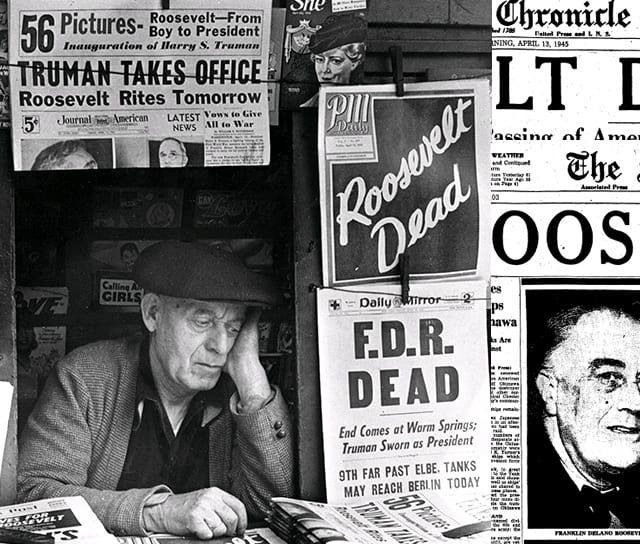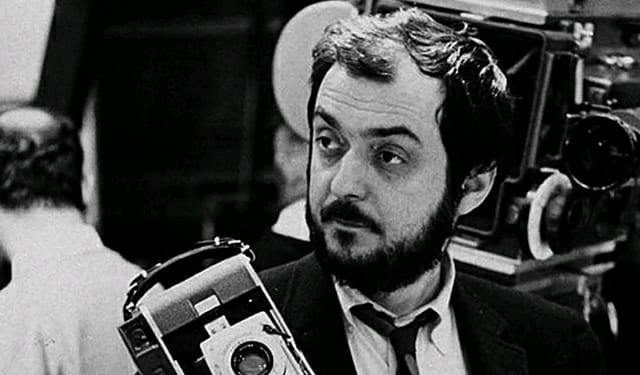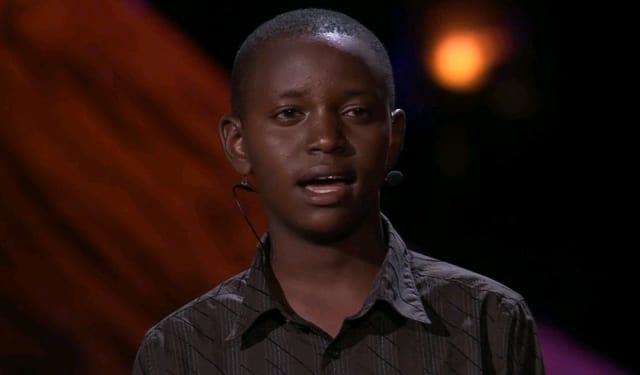A couple of years ago, as a participant of a master’s program in Denmark, I met a fellow journalist from Chile who gave me a lesson on storytelling that I will never forget.
I was in class, half-listening to the end of a monotonous PowerPoint presentation on the history of media, when the next presenter on the list—the Chilean journalist—was called to go up to the podium.
His name was Enrique Núñez, one of the quietest students in the class. All I knew about him was that he always sat in the very front row and, unlike the other students, paid the utmost attention to every word that was said.
As he prepared his notes behind the podium, everyone continued to type away behind their laptop screens. What happened next, however, caught everyone by surprise.
He confidently stepped out from behind the podium and said in a loud and animated voice, “Today, I’m going to tell you the story of a 16-year-old boy with a remarkable talent…â€
The clicking of keyboards suddenly stopped and all eyes were fixed on him.
He showed a slide with a giant image of a newspaper vendor looking sadly at the headline ‘Roosevelt Dead!’
“This now-famous picture,†he said, “was taken by this boy in 1945 and sold to a magazine for $25.â€

He then presented other images captured by this same boy: a beautiful picture of a shoe shiner gazing up at a flock of birds; another one of a showgirl putting on lipstick in the mirror.
After piquing our curiosity as to who this mystery photographer might be, he finally said:
“This boy grew up to be one of the most influential film directors of all time. Do you know who he was?â€
We all waited eagerly.

Completely dashing our expectations of him, Enrique went on to give one of the most engaging presentations we had ever heard on the evolution of visual media.
That day, we all learned that presentations didn’t have to be long and boring. They could be entertaining and informative at the same time.
The Reason Stories Fascinate Audiences
Why was Enrique’s story so captivating?
Academics and marketers alike have found that our brains are hardwired to process and store information in the form of stories. So, when we hear that “once upon a time†there was a certain character in such and such place, our minds are immediately transported to this imaginary scene.
In fact, according to professional speaker Akash Karia, stories are irresistible to the human mind because they activate our imaginations and so we have no choice but to follow the mental movies created in our heads. As a result, they are used by many TED presenters who are some of the most inspirational speakers in the world.
This is further proven by a study I conducted on the evolution of longform multimedia stories published by the New York Times. I found that many of the storytelling techniques used thousands of years ago are still applicable today to a wide range of mediums besides the written word.
Not only are they indispensable tools for novelists, they are useful for presenters, business leaders, marketers, and journalists. They can come in all forms, from slide decks and infographics to videos and static images.
Based on some of my findings of what makes a story captivating, along with advice given by leading experts, here are several ways you can make your next presentation one your audience will never forget:
1. Immerse your audience in a story.
A well-told story is something that will stick in your audience’s mind for years to come.
Take this simple yet exceptional TED talk as an example. In it, a 12-year-old Masai boy from Kenya named Richard Turere transports his audience to another world by telling a story about his experiences in his homeland.

With basic words and slides with large, graphic images, Richard weaves a captivating tale of how he invented a system of lights that was able to protect his family’s livestock from lion attacks.
The reason this presentation was so successful was that every word and image presented helped to create a clear mental picture of the problem Richard and his family faced.
Also, it clearly followed a golden rule of presentation-giving which is to use visuals that supplement your story rather than repeat what has already been said.
Another way to immerse the audience in your story is to provide sensory details that will allow them to actually see, hear, feel, and smell the different stimuli in your storyworld.
According to Akash Karia, this will turn the presentation into a mental movie that the audience cannot help but engage in, as is done in this TED talk.
Unlike novels, though, presentations must make use of short but effective descriptions.
2. Tell a personal story.
Few things are as captivating as a personal story, especially those of triumph over extreme adversity.
In his insightful book The Seven Basic Plots, author Christopher Booker finds that there are seven basic story plots that have universal appeal. These include the story of the hero defeating a monster, the rags-to-riches tale, the quest for a treasure, and the voyage of a hero who comes back a changed person.
These plots are clearly seen in some of the most popular and moving presentations ever given. Take, for example, this gripping and harrowing tale of a woman’s escape from her home land of North Korea. Or this woman’s equally powerful story of domestic violence and how she found the courage to leave her abusive spouse.
Leslie Morgan
SteinerWhy domestic violence victims don’t leave
3. Create suspense.
Those who love to watch movies or read books know that a good story always has to have a conflict and a plot. These two elements are what make a good presentation into a roller coaster ride that keeps listeners/viewers at the edge of their seats, asking themselves, “What will happen next?â€
There are several devices that can increase the level of suspense of your story. One way is to tell a story chronologically and build up to a climactic conclusion, as is done here in this story about a woman who was born without fibula bones and grew up to be an accomplished athlete, actress and model.
Another way is to plop the viewer/listener right in the middle of action and then go backwards in time to reveal how all of this occurred.
A good example of this is Zak Ibrahim’s story, which begins with the revelation that his father was involved in the World Trade Center bombing. He then goes back in time to tell events from his childhood and how he grew up to choose a different path from his father’s.
A third way is to begin by telling a predictable story and then surprise the audience by taking a completely different turn from what was expected.
For example, this TED talk begins with a presenter who leads his audience to believe he doesn’t speak English, only to surprise them in order to make a point about how we construct identity.
4. Bring characters to life.
Characters are at the heart of any story. Their fortunes and misfortunes are what make people want to laugh, cry or rejoice.
The most successful stories, I found, were those that created three-dimensional characters who were easy to identify and, at the same time, had an uncommon characteristic.
In order to do this, you must provide enough detail to bring the character to life in the minds of those in the audience.
For example, master storyteller Malcolm Gladwell creates a vivid picture of Howard in this presentation by describing his physical appearance and mentioning his hobbies and obsessions.
5 Show. Don’t tell.
Instead of telling your audience about a certain event in a story, try showing them by transporting them to a scene.
For example, in the introduction to this article, I could have simply told you that I had an introverted classmate who one day wowed the whole class with an awesome presentation. This, however, would not have had the same effect as using descriptions of setting and conversations to take you to the middle of a scene.
So, whenever you deliver a story, try scene-by-scene construction of events and use dialogue instead of narration, as seen in this presentation which won the 2014 World Championship of Public Speaking.
6 Build up to a S.T.A.R. moment.
Similar to a climax, a S.T.A.R. moment is a “Something They’ll Always Remember†event that is so dramatic that your audience will be talking about it weeks later.
According to presentation expert Nancy Duarte in her book Resonate, this can come in the form of a dramatization, provocative images, or shocking statistics.
Bill Gates resorted to this technique in a 2009 TED talk when he made the case for increasing investment in eradicating malaria. He gave statistics to prove how serious the problem was and then shocked the room by opening a jar full of mosquitos, saying “There’s no reason only poor people should have the experience.â€
7. End with a positive takeaway.
After analyzing 200 of the best TED talks, presentation expert Akash Karia found that the most effective presentations not only had a conflict and a climax, but also a positive resolution.
On the path to triumph, most characters in these stories received what he calls a “spark,†a key piece of wisdom or advice that helped them overcome their obstacles and change for the better.
This key takeaway message was then packaged into a short, memorable phrase or sound bite that could easily become viral on social media platforms like Twitter.
For example, in the previously mentioned talk on domestic abuse, the presenter concluded that instead of blaming victims, we should “recast survivors as wonderful, loveable people with full futures.â€
So, now that we have plenty of examples of how to give a memorable presentation, what are the key takeaways of this post?
Remember to:
- Immerse your audience in the story.
- Tell a personal story.
- Create suspense.
- Bring characters to life.
- Show. Don’t tell.
- Build up to S.T.A.R. moment.
- End with a positive takeaway.
“A successful talk is a little miracle—people see the world differently afterward.â€
-TED curator Chris Anderson
Source: https://visme.co/blog/7-storytelling-techniques-used-by-the-most-inspiring-ted-presenters/ff by Nayomi Chibana
